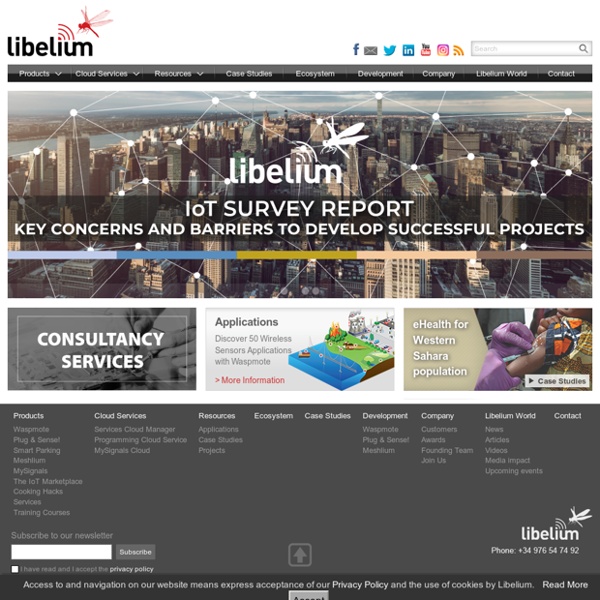



WSNL :: Stanford Wireless Sensor Networks Lab :: home What Is Sanguino? - Sanguino.cc Wireless Sensor Networks Blog leah buechley - LilyPad Arduino - introduction WSN Platforms - WSN From WSN Hardware Currently there is no common WSN platform. Some designs such as Berkeley Motes and their clones have broader user and developer communities. Miniaturization, another challenge for the WSN design, is expected to follow from recent and future progress in the fields of MEMS and NEMS. General list Accsense, Inc. Jean Paul Berríos has put together a nice series of photos of WSN platforms. Standard wireless protocols See Radio Transceivers. See Wikipedia: "Comparison of wireless data standards". Software Energy is the scarcest resource of WSN nodes, and it determines the lifetime of WSNs. Lifetime maximization Robustness and fault tolerance Self-configuration Amongst the hot topics in WSN software, the following can also be pointed out: Security Mobility (when sensor nodes or base stations are moving) Middleware: the design of middle-level primitives between the software and the hardware Middleware and Operating Systems Programming languages Algorithms Simulators Data visualization
Nanode - Network Application Node IOIO for Android Replacement:DEV-11343. IOIO-OTG is here! Now you can use the IOIO with your Android device or PC! The IOIO (pronounced "yo-yo") is a board specially designed to work with your Android 1.5 and later device. The IOIO board contains a single MCU that acts as a USB host and interprets commands from an Android app. The IOIO acts as a USB host and connects to most Android devices that have USB slave (device) capability. We're now shipping the IOIO board loaded with the V3.04 bootloader so that it's ready to go with the latest application update, which adds Open-Accessory support. We have a blog post that shows or has links to many well documented example projects, with source code. Note: This product is a collaboration with Ytai Ben-Tsvi. Replaces:DEV-10585
Guilherme Martins : PAPERduino’s design This is a fully functional version of the Arduino. We eliminated the PCB and use paper and cardboard as support and the result is.. the PAPERduino :D This is the the first version of the layout design, next we will try more designs, and another materials. You just need to print the top and the bottom layout, and glue them to any kind of support you want. We hope that you start making your own boards. If you do, please share your photos with us, we would love to see them ;) There is no USB direct connection, so to program the paperduino you will need some kind of FTDI cable or adapter. Download PDF Components list: 1 x 7805 Voltage regulator 2 x LEDs (different colors) 2 x 560 Ohm resistors (between 220oHm and 1K) 1 x 10k Ohm resistor 2 x 100 uF capacitors 1x 16 MHz clock crystal 2 x 22 pF capacitors 1 x 0.01 uF capacitor 1 x button 1 x Atmel ATMega168 1 x socket 28 pin Female and Male headers Instructions: Use a needle to puncture the holes for your components. Follow the connection lines.